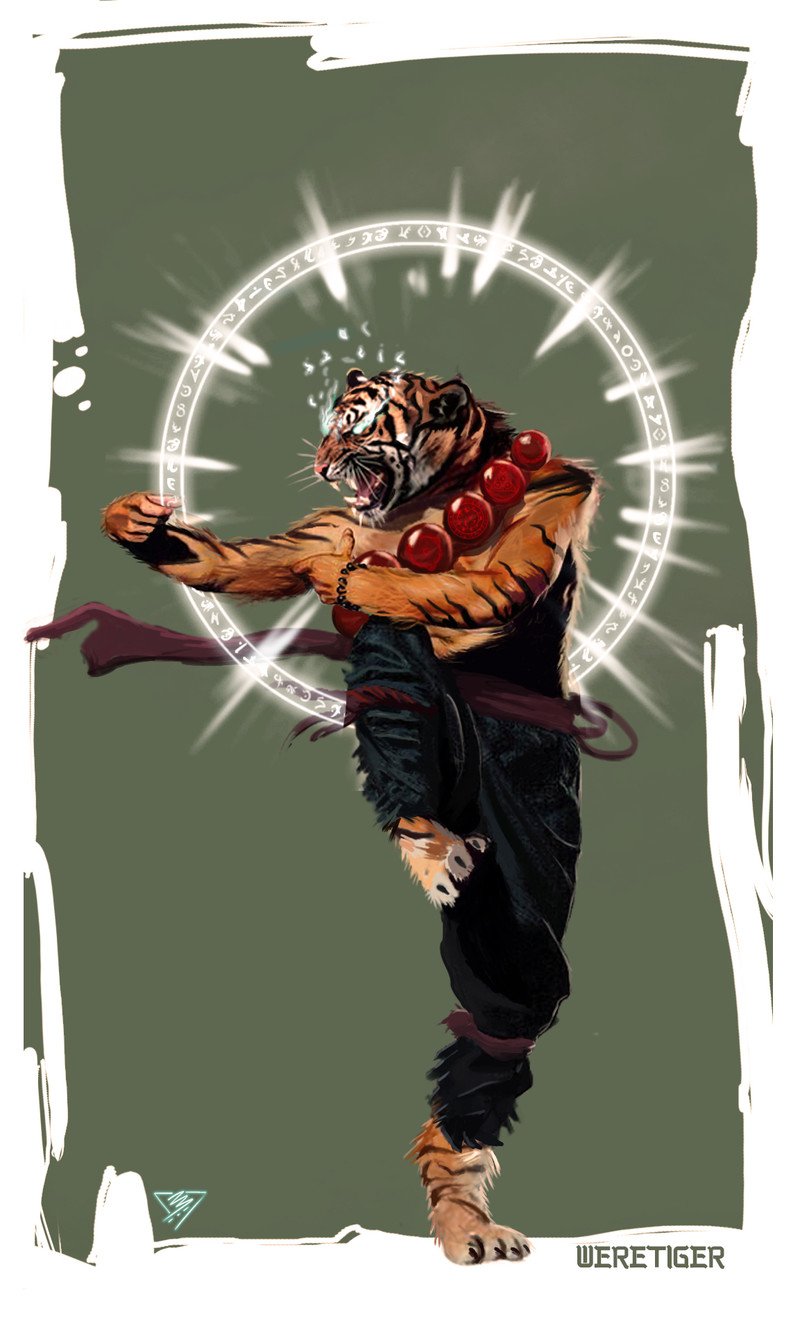Way of the Fearless Dancer (5e Subclass)
Way of the Fearless Dancer[edit]
Monastic Tradition

|
|---|
| Legendary Gunslinger by [1] by Leonardo Bernal |
Fearless dancers are savage warriors who wield their own claws and tails in battle as weapons. They cut and tear their enemies apart while unarmed, striking with the great savagery of the wild beasts, but at the same time with technique and grace of a dancer. The training of a fearless dancer is not made on the man-made floor of a training ground, nor is taught by any manuscript or manual, but is passed from dancer to dancer, and practiced in the woods, far from civilization, were those fierce warriors can fully express the true nature of their savagery.
| “ | "Combine the art of dance with a supernatural strength and a pair of sharp blades" | ” |
| —Volund, Wolf Elf | ||
Restriction: Natural Weapons
Only creatures that have natural weapons that deal slashing or bludgeoning damage can be part of this tradition. Your DM can lift this restriction to better suit your campaign.
- Dancer Art
When you choose this tradition at 3rd level, you gain proficiency in Acrobatics, and can double your proficiency whenever you are under the effects of Patient Defense or Step of the Wind.
- Savage Claws
At 3rd level, you strike with increasing ferocity with each strike. Whenever you hit two consecutive unarmed strikes on the same turn, the second one cause additional damage equal to a roll of your martial arts die.
- Dancer Rage
Starting at 3rd level, when you hit a hostile creature with an unarmed strike, you can choose to enter in your Dancer Rage. During your Dancer Rage, you gain the following benefits:
- Your unarmed strikes are made at Advantage
- When you hit a creature with an unarmed strike, the next attack roll that creature makes against you before the start of your next turn have disadvantage.
- You can take the Step of the Wind without spending ki.
- You can't be frightened. If you are frightened, the condition is suspended for the duration of the dance.
If you are able to cast spells, you can't cast nor concentrate on then for the duration of the dance. The dance lasts for 1 minute, but ends earlier if you are knocked unconscious, or if your turn end and you haven't attacked a hostile creature or haven't been attacked since then. The dance also ends if your movement speed is reduced to 0.
You can enter in a a Dancer Rage twice, and gain one additional use at 6th, 11th and 17th levels. You regain your uses of it after completing a long rest.
- Dancer Strike
At 6th level, whenever you miss an unarmed strike made at Advantage or Disadvantage, you can reroll the attack using your reaction. On a hit, you cause additional damage equal to three rolls of your martial arts die.
In addition, during a Dancer Rage, any creature you attack with an unarmed strike can't make opportunity attacks.
- Frenzied Dance
At 11th level, when you enter in a Dancer Rage, or as a bonus action during one, you can enter in a Frenzied Dance. While in the Frenzied Dance, you can make one additional attack in each of your turns when you take the Attack action.
When you take damage during a Frenzied Dance, you must succeed on a Concentration check (as you would for a spell). On a failure, both the Frenzied Dance and the Dancer Rage end. You can choose to keep a Frenzied Dance on a failed Concentration check. If you do, you suffer 1 level of exhaustion after the dance ends.
In addition, whenever you have no uses of your Dancer Rage left, you can spend 10 ki points to do so again.
- Keen Claws
At 17th level, whenever you are in your Frenzied Dance, you gain the following benefits:
- You score critical hits on a roll of 19-20 with your unarmed strikes. This increases to 18-20 during a frenzied dance.
- The dice is multiplied by three, instead of two, when you score a critical hit. They are multiplied by four during a frenzied dance.
Back to Main Page → 5e Homebrew → Character Options → Subclasses

